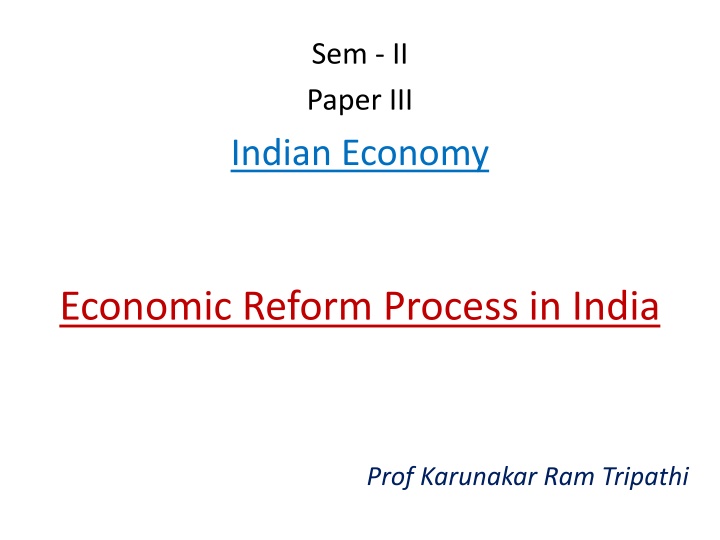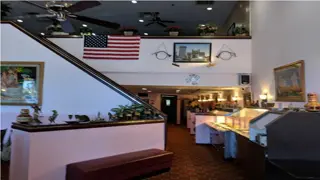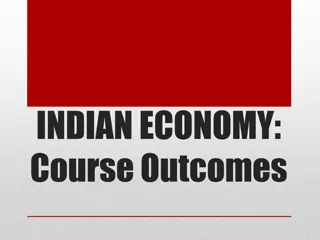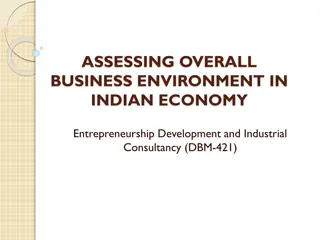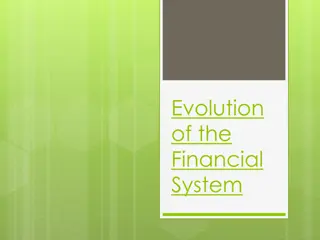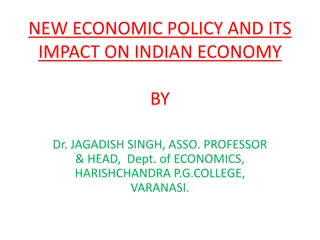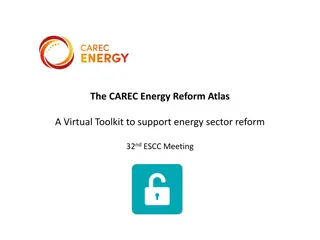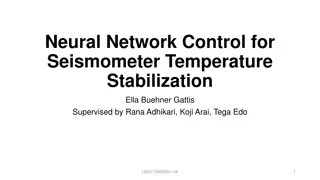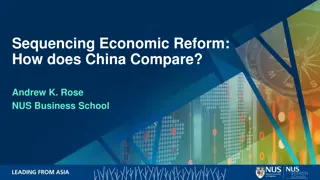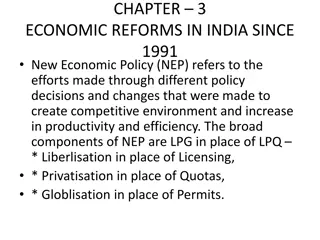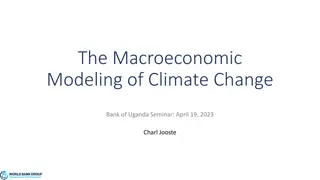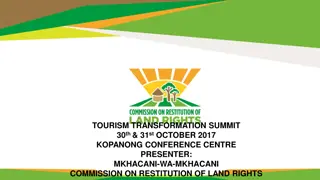Indian Economy Reform Process in 1991 & Macroeconomic Stabilization
Economic reform process in India started in 1991 due to fiscal imbalance, fragile BoP situation, and mounting inflationary pressure. Dr. Manmohan Singh led the economic reforms, focusing on macroeconomic stabilization and structural adjustment program through measures like controlling inflation, fiscal adjustment, and improving the BoP situation.
Uploaded on Mar 15, 2025 | 2 Views
Download Presentation

Please find below an Image/Link to download the presentation.
The content on the website is provided AS IS for your information and personal use only. It may not be sold, licensed, or shared on other websites without obtaining consent from the author.If you encounter any issues during the download, it is possible that the publisher has removed the file from their server.
You are allowed to download the files provided on this website for personal or commercial use, subject to the condition that they are used lawfully. All files are the property of their respective owners.
The content on the website is provided AS IS for your information and personal use only. It may not be sold, licensed, or shared on other websites without obtaining consent from the author.
E N D
Presentation Transcript
Sem - II Paper III Indian Economy Economic Reform Process in India Prof Karunakar Ram Tripathi
Background Economic reform process in India was stared in the year 1991 when economy trapped in to major economic crisis. The crisis erupted in the form of: - fiscal imbalance - fragile balance of payment situation, and - - mounting inflationary pressure.
Fiscal imbalance Fiscal imbalance emerged in the form of high fiscal deficit and increased internal debt of Central Government. Fiscal deficit which was 5.1% of GDP in 1981-82 reached up to 8.4% in 1990-91. The internal debt which was 33.3% of GDP in 1981-81 reached up to 49.7%. The danger of the government falling into debt-trap was knocking the door.
Fragile BoP situation Fragile BoP situation emerged in the form of high current account deficit (CAD) and this deficit was financed by foreign borrowing. The current account deficit which was 1.35% of GDP in 1980- 81 reached up to 3.69% in 1990-91. Fragile BoP situation also emerged in the form of scarcity of foreign exchange reserve. In the late June 1991, the level of foreign exchange reserves dropped to the level which was not sufficient to finance the imports of even 10 days.
Mounting inflationary pressure Mounting inflationary pressure emerged in the form of alarming inflationary situation in the country. Inflation which was 6.7% per annum in the second half of 1980s reached up to 10.3% in 1990-91. In terms of consumer price index, the rate of inflation climbed to 11.2%. This price rise was seen even after three good monsoon in a row .
Economic Reform Process in India The economic reforms process undertaken by then Finance Minister Dr. Manamohan Singh under the P.V. Narasimha Rao government. The reform process consisted of two distinct strands:- - Macroeconomic Stabilization - Structural Adjustment (Reform) Programme (SAP)
Macroeconomic Stabilization The purpose of Macroeconomic Stabilization was to deal with demand management in the economy. The process consisted of the following three measures: - Control of Inflation - Fiscal Adjustment - Improving the BoP situation
Basicaly, the Macroeconomic Stabilization measures were adopted though the introduction of fiscal discipline and BoP adjustment policy particularly exchange rate management.
Fiscal Discipline Following fiscal discipline, the budget for 1991-92 took a bold step in the direction of correcting fiscal imbalance. It envisaged a reduction in fiscal deficit by nearly two percentage points of GDP from 8.4 percent in 1990-91 to 6.5 percent in 1991-92. The budget aimed at containing government expenditure and augmenting revenues. The budget aimed at reversing the downtrend in the share of direct taxes to total tax revenues. The budget aimed at curbing conspicuous consumption.
BoP adjustment policy For the purpose of macroeconomic stabilization, the BoP adjustment policy consisted of devaluation of rupee. Accordingly, within a week two-stage devaluation was done in July 1991 by the government. On July 1, rupee was devalued by 7 to 9 per cent, and On July 3, rupee was devalued by 11 per cent.
Structural Adjustment Programme Structural Adjustment Programmes were undertaken to improve the supply side of the economy. The important measures taken were:- - Industrial Policy Reforms - Promoting Foreign Investment - Fiscal Sector Reforms - Monetary and Financial Sector Reforms - Reforms in Capital Markets - Trade Policy Reforms - Rationalization of Exchange Rate Policy
Industrial Policy Reforms The government announced a New Industrial Policy on 24 July 1991. The central elements of industrial policy reforms were as follows: Industrial licensing was abolished for all projects except in 18 industries. With this, 80 percent of the industry was taken out of the licensing framework. The Monopolies & Restrictive Trade Practices (MRTP) Act was repealed to eliminate the need for prior approval by large companies for capacity expansion or diversification. Areas reserved for the public sector were narrowed down and greater participation by private sector was permitted in core and basic industries.
The new policy reduced the number of areas reserved from 17 to 8. These eight are mainly those involving strategic and security concerns. (Example, railways, atomic energy etc.) The policy encouraged disinvestment of government holdings of equity share capital of public sector enterprises. The public sector units were provided greater autonomy and professional management that could be helpful for generating reasonable profits, through an MOU(Memorandum of Understanding) between the enterprise and the concerned Ministry, through which targets that the enterprise had to achieve were set up.
Promoting Foreign Investment In 1991, the government announced a specified list (including 35 industries) of high technology and high- investment priority industries. In these industries, automatic approval was granted for foreign direct investment (FDI) up to 51 percent foreign equity. The limit was raised to 74 percent and subsequently to 100 percent for many of these industries.
Moreover, many new industries have been added to the list over the years. Foreign Investment Promotion Board (FIPB) was been set up to negotiate with international firms and approve direct foreign investment in select areas. Steps were also taken from time to time to promote foreign institutional investment (FII) in India.
Fiscal Sector Reforms The budget for 1991-92 took a bold step in the direction of correcting fiscal imbalance. It envisaged a reduction in fiscal deficit by nearly two percentage points of GDP from 8.4 percent in 1990-91 to 6.5 percent in 1991-92. The budget aimed at containing government expenditure and augmenting revenues; reversing the downtrend in the share of direct taxes to total tax revenues and curbing conspicuous consumption.
Some of the important policy initiatives introduced in the budget for the year 1991-92 for correcting the fiscal imbalance were:- - reduction in fertilizer subsidy - abolition of subsidy on sugar - disinvestment of a part of the government s equity holdings in select public sector undertakings, and - acceptance of major recommendations of the Tax Reforms Committee headed by Raja Chelliah. These recommendations aimed to raise revenue through better compliance in case of income tax and excise and customs duties, and make the tax structure stable and transparent.
Monetary and Financial Sector Reforms Monetary reforms aimed at doing away with interest rate distortions and rationalizing the structure of lending rates. The new policy tried in many ways to make the banking system more efficient. Some of the measures undertaken were: Reserve Requirements: reduction in statutory liquidity ratio (SLR) and the cash reserve ratio (CRR) in line with the recommendations of the Narasimham Committee Report, 1991. In mid-1991, SLR and CRR were very high. It was proposed to cut down the SLR from 38.5 percent to 25 percent within a time span of three years. Similarly, it was proposed that the CRR br brought down to 10 percent (from the earlier 25 percent) over a period of four years.
Interest Rate Liberalisation: Earlier, RBI controlled the rates payable on deposits of different maturities and also the rates which could be charged for bank loans which varied according to the sector of use and also the size of the loan. Interest rates on time deposits were decontrolled in a sequence of steps beginning with longer term deposits, and liberalisation was progressively extended to deposits of shorter maturity Greater competition among public sector, private sector and foreign banks and elimination of administrative constraints Liberalisation of bank branch licensing policy in order to rationalize the existing branch network
Banks were given freedom to relocate branches and open specialized branches Guidelines for opening new private sector banks New accounting norms regarding classification of assets and provisions of bad debt were introduced in tune with the Narasimham Committee Report
Reforms in Capital Markets Recommendations of the Narasimham Committee were initiated in order to reform capital markets, aimed at removing direct government control and replacing it with a regulatory framework based on transparency and disclosure supervised by an independent regulator. The Securities & Exchange Board of India (SEBI) which was set up in 1988 was given statutory recognition in 1992 on the basis of recommendations of the Narasimham Committee. SEBI was mandated to create an environment which would facilitate mobilization of adequate resources through the securities market and its efficient allocation.
Trade Policy Reforms Under trade policy reforms, the main focus was on greater openness. Hence, the policy package was essentially an outward-oriented one. New initiatives were taken in trade policy to create an environment which would provide a stimulus to export. at the same time reducing the degree of regulation and licensing control on foreign trade.
Rationalization of Exchange Rate Policy One of the important measures undertaken to improve the balance of payments situation was the devaluation of rupee. In the very first week of July 1991, the rupee was devalued by around 20 percent. In the budget 1992-93, government introduced liberalised exchange rate management system (LERMS). This system introduced partial convertibility of rupee on current account. Under this system, a dual exchange rate was fixed under which 40 per cent of foreign earnings were to be surrender at official exchange rate while the remaining 60 per cent were to be converted at a market- determined exchange rate.
In the 1993-94 budget, 40:60 ratio was extended to 100 per cent. That is, rupee was made fully convertible on current account. In subsequent years FERA was modified. In 1999, FERA was replaced by FEMA.
Evaluation of Reform Process The economic reform process initiated in the year 1991 was Crisis Driven strategy. Nearly a decade of working of reform process had brought about a significant stabilization in the economy. The growth rate of GDP of during 1993-94 to 1998-99 had average to more than 7 per cent per annum. Thus Indian economy had crossed the barrier of Hindu Rate of growth. Country was able to build up foreign exchange reserve of order 32.4 billion US $ in 1998-99 which was sufficient for paying of import for longer period. Average export-import ratio improved. Inflation rate in terms of wholesale price came down to 3.54 per cent per annum. Fiscal deficit came down to 5.6 per cent in 1999-2000
Criticisum In the reform process, industry-first strategy was promoted and agriculture was bypassed. Therefore, along with agriculture, a development strategy was realised which would focus on infrastructure development in general and social infrastructure (education and health) in particular. Moreover the strategy was required to reduce income inequality and poverty. Therefore in coming years, particularly in tenth Plan, focus has shifted to Inclusive Growth and Sustainable Development.
Refferences: Misra, S.K. and V.K. Puri, Indian Economy (37 ed, 2015) pp 499-505, Himalaya Publishing House, Mumbai. http://indiabefore91.in/1991-economic- reforms
